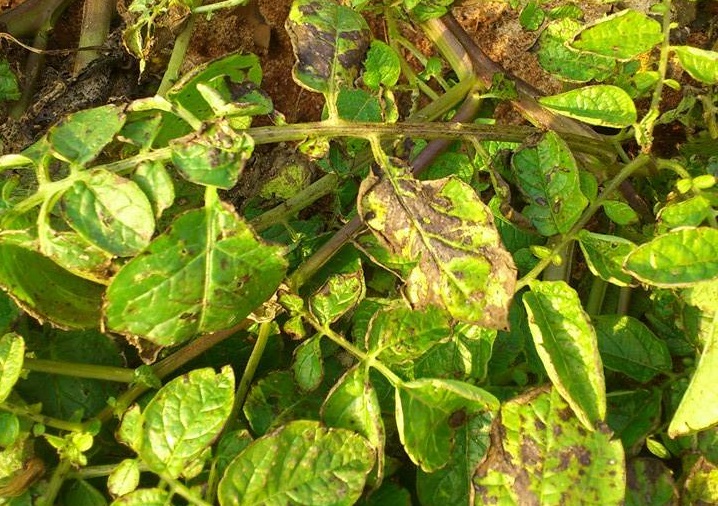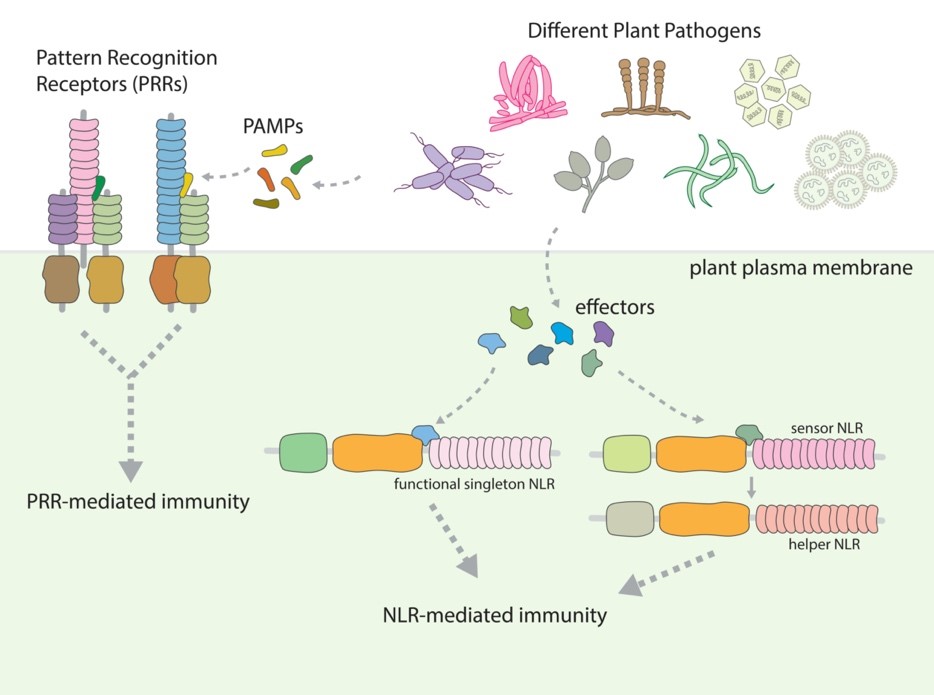
(Photo provided by Dr. Chih-Hang Wu)
Plant-Microbe Interactions
Plants are in constant interaction with their environment as they grow. Microbes, although invisible to the naked eye, are ubiquitous. As plants are rooted in the soil for their entire lifespan, they develop an intimate relationship with the microorganisms in their immediate surroundings. This relationship between plants and microbes can be beneficial, detrimental, or mutually advantageous. Some microbes assist in nutrient uptake, enhance disease resistance, and facilitate interactions with other organisms. On the other hand, some microbes can harm plants by damaging their roots, inhibiting nutrient absorption, or directly impeding their growth. Such damage can lead to decreased crop yields and jeopardize food security, which is a serious concern that should not be overlooked.
Plant Diseases
Plants are vulnerable to infection by various types of pathogens, including viruses, bacteria, fungi, and nematodes, which can infiltrate in different ways. In Taiwan, rice blast is a well-known disease caused by the fungus Magnaporthe oryzae, which creates lesions on rice plants. Other famous plant diseases include anthracnose, which causes black spots on mangoes, papaya ringspot virus, which hinders papaya growth and fruiting, and banana wilt, which causes banana trees to shrivel. Throughout history, there have been significant plant disease epidemics, such as the tulip-breaking virus outbreak in the Netherlands during the 17th century, which caused a surge in tulip prices and an economic bubble. In the 19th century, the Irish Potato Famine was caused by potato blight, resulting in a significant reduction in potato production and a population decline of nearly a quarter.
The Plant Immune System
Plants have an immune system that is similar to animals, which enables them to defend against infections caused by various pathogens. This system recognizes and limits the growth of pathogens through different mechanisms. The first mechanism involves the use of Pattern Recognition Receptors (PRRs) located on the cell surface, which can detect Pathogen-Associated Molecular Patterns (PAMPs) and trigger the immune system to repel pathogen invasion. The second mechanism involves the use of Nucleotide-binding domain Leucine-rich repeat Receptors (NLRs) located inside the cell, which can detect effector proteins secreted by pathogens and activate an immune response to eliminate the pathogen. Some NLRs function independently, while others work together. When working together, a “Sensor NLR” detects the pathogen, and a “Helper NLR” is responsible for immune signaling. The laboratory of Dr. Chih-Hang Wu at the Institute of Plant and Microbial Biology, Academia Sinica, is currently studying how these sensor and helper NLRs work together to gain insight into plant disease resistance.

New Findings on Plant Immune Receptor Proteins
Plants have highly sophisticated immune systems that enable them to combat various pathogens effectively. Upon detecting pathogens, plant immune receptors trigger downstream immune signals, including cell death induction, to prevent the spread of infection. However, immune receptors and networks in plants require precise regulation to avoid autoimmune reactions during growth. Recently, Dr. Chih-Hang Wu, along with Dr. Sophien Kamoun’s lab in the UK, discovered a novel immune receptor protein, called “Modulator NLR.” Unlike other immune receptor proteins, Modulator NLR does not trigger cell death but rather participates in regulating the immune response mediated by helper NLRs. This type of immune receptor protein can help maintain immune system homeostasis and impact the trade-off between plant immunity and growth. The study has been published in the international journal PLOS Genetics (https://doi.org/10.1371/journal.pgen.1010500).
Application of Plant Immune System
Plant diseases and pests can have a significant impact on crop yields. While chemical pesticides have been a popular solution, they come with their own set of challenges, including environmental harm and the emergence of resistant pathogens, making it essential to explore alternative methods of pest control. To address these challenges, scientists are exploring various methods, such as genetic engineering and biological control agents, to develop more effective ways to prevent diseases. Furthermore, studying the mechanisms of the plant immune system can provide insight into ecological interactions and lead to the development of environmentally friendly agricultural practices.
Conclusion – Healthy Plants and Sustainable Agriculture
Sustainable agriculture relies on the health of plants, making it crucial to understand the regulatory mechanisms and defense responses of the plant immune system. A deep exploration of these systems can help to effectively protect plant growth and ensure the health of important crops. By prioritizing the study of plant immunity, we may prevent future food crises and support sustainable agricultural practices.
